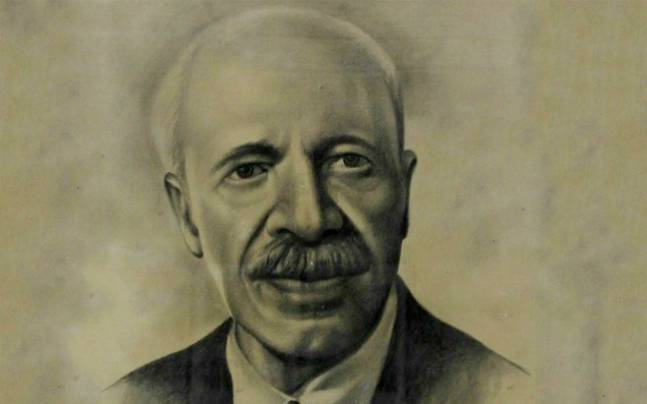
Jim Corbett- A Legacy Every Nature/Animal Lover Should Be Proud Of!
Date:

Share post:
Most people know only Jim Corbett, the forest. Know about the person it is named after, and his life chronicles as a hunter and a nature conservationist, both.

Roaming in the enchanting woods of Jim Corbett and spotting wildlife, is in the bucket list of many explorers and wander lustres. Its trees stand tall speaking to the sky, while winds hush music in our ears. We’d have to tear our sight apart to overlook the beauty of the occasional water creeks, to marvel at the giant green mountains that stand illustriously as if protecting the small grazing lands in between. The jungle is so densely green that spotting wildlife in action, especially the tigers, is like witnessing a Nano-second being broken into further Nano-seconds. You wait for it so earnestly that you almost feel the time transcend. The beauty of Jim Corbett, the forest is poetry-in-motion.
However, most people know little or are absolutely clueless about the history of the jungle and the person who established it as India’s first nature conservation park. The beautiful Indian forest is named after one of the popular British nature conservationists of his time, who also goes by the same name- Jim Corbett.
Jim was born in Nainital, Uttarakhand in the pre-independence era. His father was a postmaster, who was succeeded in his occupation by his eldest son after his death. Young Jim grew in an abundance of nature, wilderness, and flora. He caught a particular fascination for the life in the Kumaon jungles. Even with a British lineage, he became one among the locals due to his friendliness. He learnt the regional dialect. Jim could soon identify the species of most migratory and non-migratory birds and animals of the region. As he grew up, he self-taught himself to track and hunt.
Kumaon forest (presently called as Jim Corbett) boasted of a dense tiger population traditionally. There was always an unsaid tension in nearby villages about attacks by these big cats. However, growing up so close to the nature bestowed Jim with a certain fearless attitude. The idea of wildlife around human habitation did not make him uncomfortable. Knowing that he is brave and enthusiastic about tracking and hunting man-eating animals, villagers soon started to call him during any such emergencies. Though Jim was a skilful hunter, he loved animals from the heart. He immensely respected tigers and was often quoted describing them as “a large-hearted gentleman with boundless courage”. Leopards were his second favourite, about whom he once said: “Those who have never seen a leopard can have no conception of the grace of movement, and beauty of colouring of this, the most graceful and the most beautiful [of animals] in our Indian jungles.” He knew that these wild cats would not feast on petty human flesh unless they were either injured or old enough to hunt. Hence, in the absence of any alternative, he had to kill them before they posed a larger threat. Champavat is the first tiger that he ever killed.
Taking up a Job in railways as a shipment contractor, he travelled across India. His love for nature and wildlife grew with time. Wherever he went, he became known for his skill of killing the man-eating animals. In his lifetime, he is said to have killed more 100 tigers and leopards, one of which was Rudraprayag, a ferocious leopard that had alone claimed more than 125 human lives! Even though he hunted, he became increasingly worried about the conservation of India’s flora and Fauna. Hence, he started filming these tigers on camera and started spreading awareness on the importance of preserving nature and its gems. He has authored several books; most popular being “The Man-eaters of Kumaon” and “Jungle Lore.”
Not just animals, Jim is infamous for capturing Sultana Daku– known as the Indian Robinhood of his time. Sultana was on a flee for many years, much to the annoyance of the British government who failed to catch him for many years, even after several attempts. They set up many special troops and organizations to simply catch him. When all their efforts were going in vain, they became ready to give up. As a last try, they appointed Jim Corbett in charge of this mission, when they heard that Sultana has taken shelter in the wilderness of Kumaon. Living up to his reputation, Jim was able to catch Sultana. However, the chases of many months left him in awe of Sultana and his characteristics, to whom he dedicated an entire chapter called as “Sultana: Indian Robin Hood” in his book “My India”.
Jim Corbett was on the forefront in establishing the oldest national park of India in 1936. It was later named after him to honour his legacy of protecting humanity from man-eating animals by risking his life; and his efforts of conserving and protecting the nature and wildlife from industrial encroachment. Jim Corbett’s history has been immortalized and is time and again sung by the fickle and dwindling lives of the Kumaon forests. One can almost feel the gratitude in the air while mindlessly gazing far away into the perpetual beauty of the Jim Corbett forest.
